Recent Articles
Popular Makes
Body Types
2021 Toyota Highlander Hybrid Road Test and Review
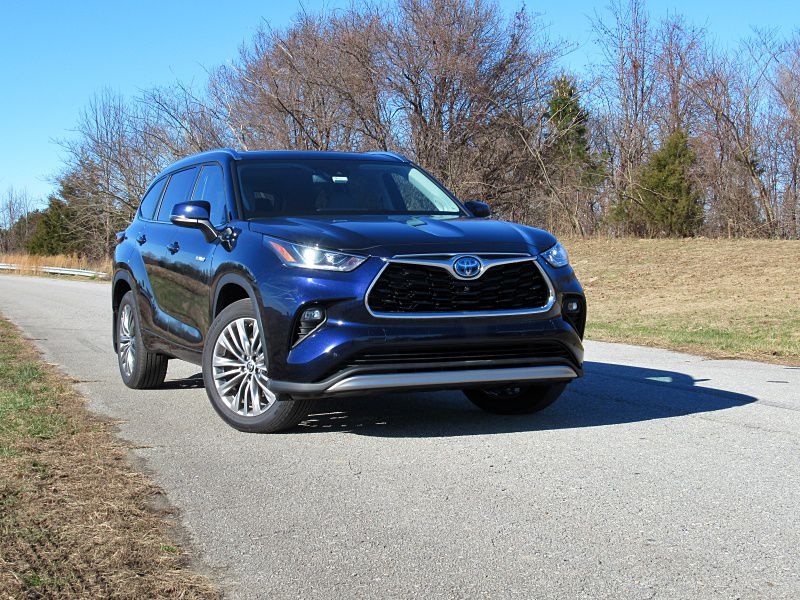
2021 Toyota Highlander Hybrid Platinum ・ Photo by Brady Holt
Everyone likes great gas mileage. But as your family grows, you no longer fit so easily in your Toyota Corolla or Camry sedan. It’s time for three rows of seats, and the Toyota Highlander is beckoning you. However, with its 295-horsepower V6, it manages 24 miles per gallon in mixed driving — quite good for an eight-passenger mid-size SUV, but nothing like a small car.
If 24 mpg isn’t good enough, how about the 2021 Toyota Highlander Hybrid? It gives up some horsepower and costs more than the gasoline-only Highlander, but its fuel economy soars as high as 36 mpg in mixed driving. We recently spent a week in a Highlander Hybrid to see whether this family-friendly fuel-sipper is as good as it looks on paper, and whether it’s still a compelling choice in the face of new competition.
How It Works
The Highlander Hybrid combines a 2.5-liter four-cylinder gasoline engine with two electric motors for a combined output of 243 horsepower. The electric motors can help the gasoline engine — making it work less hard and burn less gas — or even take over entirely sometimes when you’re coasting or accelerating gently. The electric battery recharges as you drive, using energy from the gas engine and braking friction.
Earlier Highlander Hybrid generations, sold before the 2020 model year, used quieter and more powerful but less efficient V6 engines. The result is a jump of up to 7 mpg, from 29 mpg in mixed driving to 36 mpg. The total breakdown is 36 mpg in the city and 35 mpg on the highway, or about 1 mpg less for some trim levels, including our test vehicle. With gentle acceleration and at speeds below 15 to 20 mph, our test vehicle frequently stayed in all-electric operation, burning no gas. But it was less mind-blowing at highway speeds, and we observed well below the EPA’s highway estimate. This is a fantastic vehicle for city driving or stop-and-go rush hour, but it won’t be so amazing on a multistate road trip. We saw 32 mpg overall.
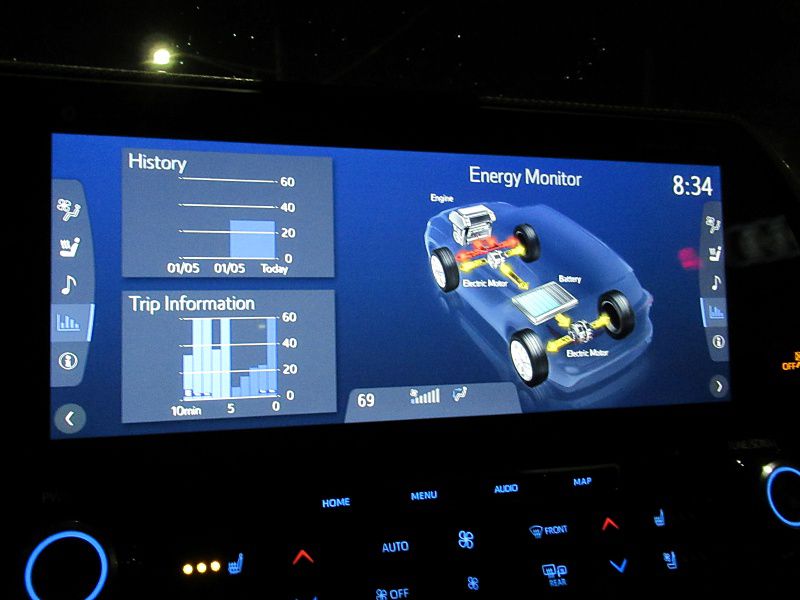
Photo by Brady Holt
Easy to Drive
Like other hybrids, the Highlander Hybrid performs best when you’re driving attentively to maximize the time you can spend in fully electric operation. Push the gas pedal just a little bit harder, and suddenly the engine needs to turn on to help you. Still, this is an easy vehicle to drive; 243 horsepower isn’t thrilling, but you’ll never have to worry about keeping up with traffic when you really need to get moving.
The four-cylinder engine is paired with a continuously variable automatic transmission (called CVT), and that combination produces a droning sound from the engine if you accelerate hard. But this is still a generally quiet vehicle, if not an especially luxurious one. Similarly, its ride quality — it’s smooth, but the vehicle shudders in a cheap-feeling way when you hit a bump — is firmly in the family-friendly camp. The Highlander isn’t one of the mid-size SUVs that can pass for a luxury car. Another thing making the Highlander easy to drive is that it’s a little smaller than most competing three-row crossovers; it has grown over the years, but many other models are longer and wider. It’s decently agile without feeling sporty.
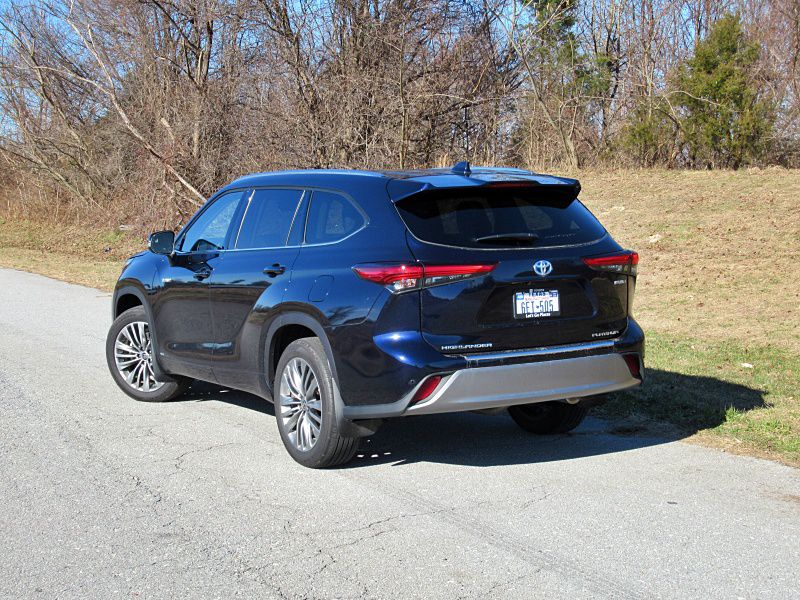
Photo by Brady Holt
Not Inexpensive
Even though the Highlander Hybrid isn’t much of a luxury car, it’s definitely not cheap. It starts at $38,410, a $4,000 premium over the gas-only Highlander. However, most of that difference is that you can’t get the hybrid in the gas Highlander’s base L trim level; the difference is a more reasonable $1,400 when the SUVs are comparably equipped.
The base Highlander Hybrid LE provides a wide range of advanced safety features along with an 8-inch infotainment touchscreen, a power-adjustable driver’s seat, tri-zone automatic climate control, a power liftgate, and keyless entry with push-button starting. Other trim levels include the leatherette-upholstered XLE ($41,210) and the extra-opulent Limited ($45,165) and Platinum ($48,365). All-wheel drive costs about $1,500 to $2,000 extra on all trim levels. Our AWD Platinum test vehicle totaled $51,808. It has lots of features, to be sure — rich leather, a 12.3-inch touchscreen, heated and ventilated front seats, a panoramic moonroof, an 11-speaker JBL sound system, and more. But every Highlander is on the expensive side for its class, and the hybrid is even more so.
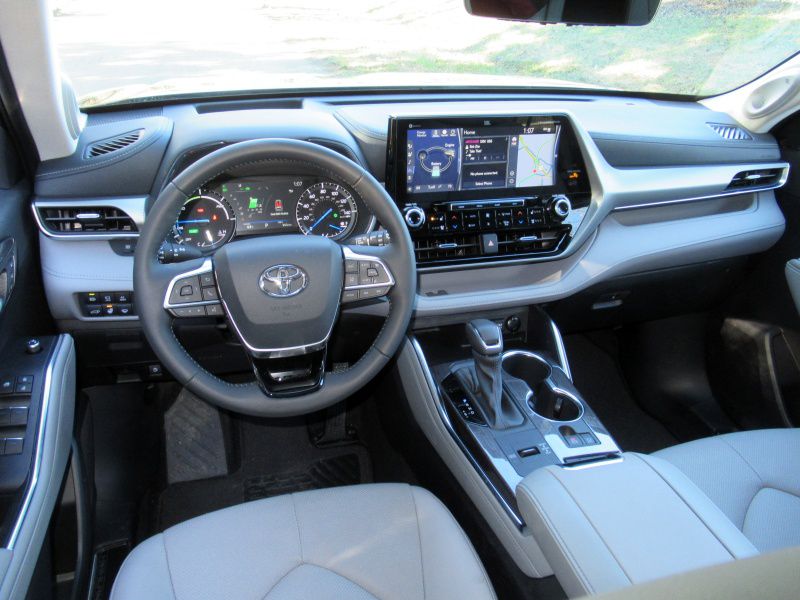
Photo by Brady Holt
Familiar Styling
Although the Highlander was fully redesigned just last year, the latest generation’s styling stays close to the proportions and many details of the 2014-2019 model. That means it looks a little long and narrow, with a large nose. It has aggressively slim headlights and taillights and an upright grille. One new design element on the current generation is a bulging rear fender, a look shared with the Toyota Supra sports coupe. Overall, this isn’t an SUV that tries to look like a mighty truck, though it doesn’t try to be forgettable either.
Compared with the non-hybrid Highlander, there are just a few cosmetic differences. The Highlander Hybrid has blue-tinged exterior Toyota logos, and small “hybrid” badges on the front fenders and the liftgate. This isn’t a vehicle that telegraphs its fuel savings to the world.
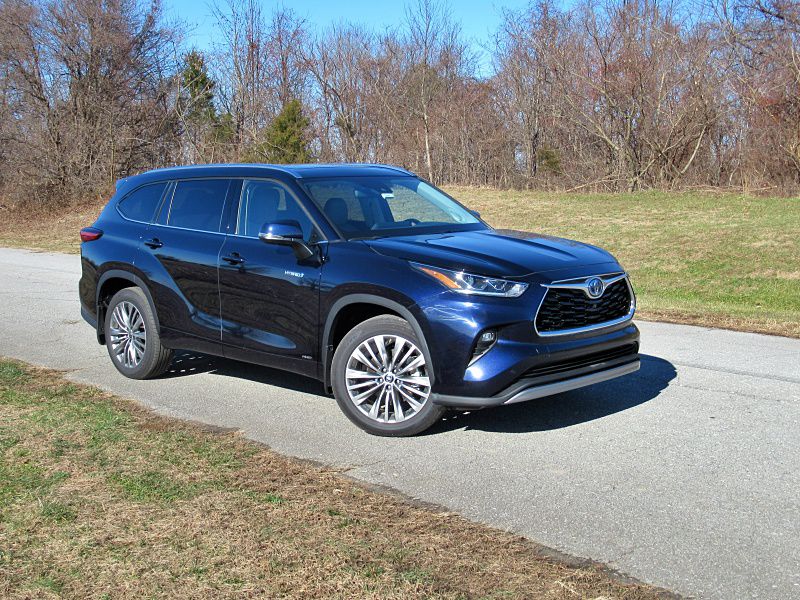
Photo by Brady Holt
Advanced Interior
The latest Highlander is available with the largest infotainment touchscreen in its class, measuring 12.3 inches. You can customize it with up to three side-by-side information displays, or choose one to take over the full real estate. The system supports Android Auto and Apple CarPlay smartphone integration, and it generally works well. It’s not the slickest system out there, without the quickest possible responses or the most modern-looking graphics, but it’s easy to use and certainly has a big screen. An 8-inch screen is standard equipment and also works fine.
Overall, the interior avoids the rugged cues you’ll find in many crossover SUVs. Our top-of-the-line Platinum test vehicle has plush leather on the seats, dashboard, and door panels, though the overall cabin design is more functional than fancy. Toyota carves out storage areas everywhere, but this doesn’t feel like a $50,000 vehicle. Lower-trim models feel even less upscale.
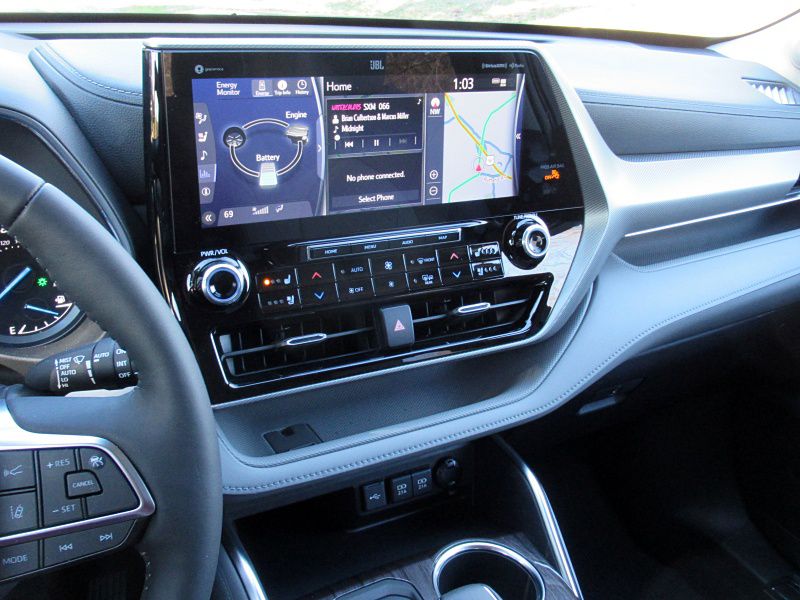
Photo by Brady Holt
Seating for Eight
The Highlander seats either seven or eight passengers — two in the front, either two or three in the second row (depending on whether you choose captain’s chairs or a bench seat), and three in the third row. Even a number of bigger crossovers provide just two seatbelts in the third row, for a choice between six and seven passengers. An in-cabin microphone, available on most trim levels, lets the driver more easily talk to little ones in the far back.
That said, the Highlander Hybrid isn’t especially roomy. Anyone can be comfortable in the first two rows, but the third row has limited legroom, even by the low standards of a mid-size crossover. And with the third row in use, cargo space is limited to a modest 16 cubic feet. That’s more than past Highlander Hybrid generations, and more than the competing Kia Sorento Hybrid, but less than most other mid-size crossovers. Folding the third row opens up a more competitive 48.4 cubic feet behind the second row and 84.3 cubic feet behind the front seats.
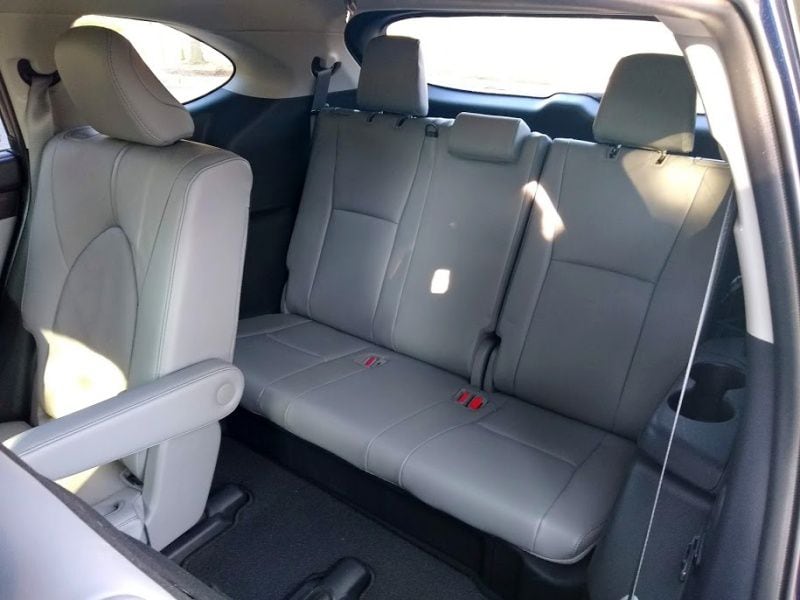
Photo by Brady Holt
Top Safety Pick
The Highlander Hybrid earned a Top Safety Pick+ designation from the Insurance Institute for Highway Safety, the highest available rating. It also earned five out of five stars in National Highway Traffic Safety Administration crash testing.
No less impressively, it comes standard with a long list of safety technology: Automatic emergency braking with pedestrian detection, lane-keep assist, adaptive cruise control, and blind-spot monitoring with a rear cross-traffic alert are included on every Highlander Hybrid. A surround-view parking camera and a head-up display are available on high-end trim levels.
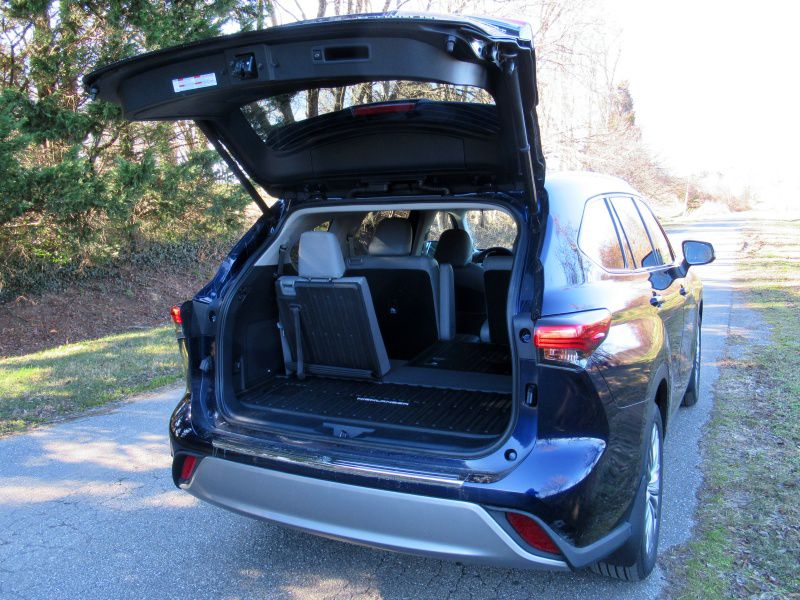
Photo by Brady Holt
The Elephant in the Room
The Highlander Hybrid is used to being pretty much the only name in town for a three-row hybrid. That changed this year in a big way. The newly redesigned 2021 Toyota Sienna minivan is a mechanical cousin to the Highlander Hybrid, and it provides substantially more interior room and equivalent gas mileage for thousands of dollars less. It even offers all-wheel drive. The Highlander Hybrid’s slightly smaller size can be an asset in tight quarters, and it has a higher ground clearance (8 inches versus 6.4 inches). But unless minivan style is off-limits, the Sienna Hybrid is the more sensible choice for most prospective buyers.
There’s another brand-new competitor this year, too: the 2021 Kia Sorento Hybrid, a fellow mid-size crossover. It provides a sportier, higher-end driving experience and costs less than the Highlander Hybrid, but it has even less interior space and is only available with front-wheel drive. Another hybrid in this class is the Ford Explorer, but its V6-based powertrain gets mediocre gas mileage, and it’s available only in a high-end $50,000-plus trim level. Lastly, if you drive mostly on the open highway, you’ll see less benefit from a hybrid powertrain and could consider a non-hybrid crossover.
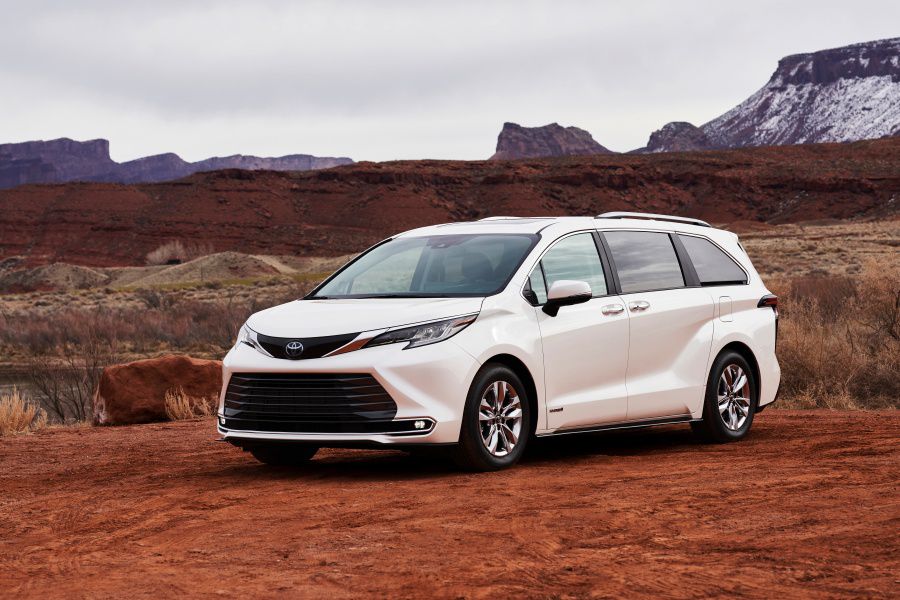
Photo by Toyota
Family-Friendly Fuel-Sipper
While we think the new hybrid Toyota Sienna makes more sense than the Highlander Hybrid, the same has long applied to the gasoline-only Highlander versus the gasoline-only Sienna, and consumers overwhelmingly prefer the former.
If you’re among them, you’ll find that the Highlander Hybrid is an agreeable family car with an SUV-sized interior and economy-car-sized fuel costs. For drivers who aren’t picky about extra-speedy acceleration — and, to be clear, the hybrid isn’t slow — and spend a fair bit of time in low-speed or stop-and-go conditions, the hybrid is the better choice. It costs more, but it will easily pay for itself. We don’t love any Highlander’s driving experience or third-row-seat space, and we wish it cost less. But no other SUV can simultaneously match its spaciousness, efficiency, and affordability.
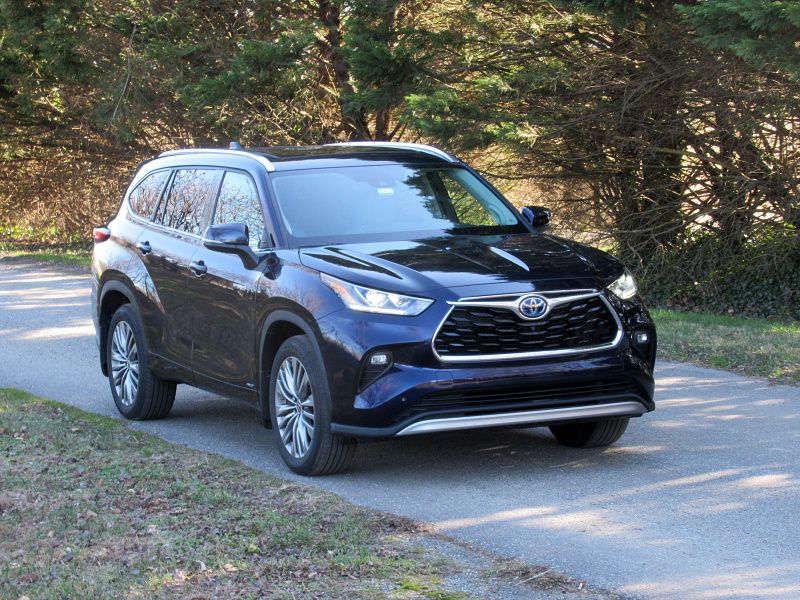
Photo by Brady Holt